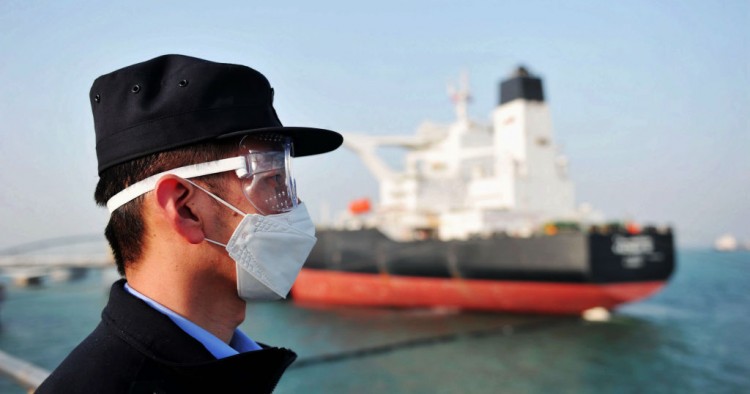The coronavirus pandemic has had a sweeping impact on the oil and gas market.
This once-in-a-lifetime crisis has shaken the industry by pulverizing consumption and shattering the OPEC+ production-cut deal that had kept oil prices at an economically viable level.
The oil market was going through upheaval even before the crisis struck. The world has been awash in crude for the past five years, thanks to an increase in non-OPEC output.
A factor keeping the glut from subsiding has been that China’s double-digit economic growth rates have tumbled into the single digits.
When the pandemic began crippling airlines and other forms of transportation — a sector that accounts for 61 percent of the entire oil market — crude consumption started to plunge.
Concerned about even lower oil prices, Saudi Arabia asked Russia to cut an additional 1.5 million barrels of OPEC+ output, but Russia refused. The collapse of talks aimed at a new OPEC + agreement on April 1 prompted Saudi Arabia to ramp up production, dropping prices even further.
If Russia and Saudi Arabia fail to reach a new production-cut agreement by April 1, when the current one expires, then the global market will essentially become unregulated, with the potential for vast price surges and drops. Prices will be set only by the basic economic forces: supply and demand.
On the supply side of the equation, the oil glut and heightened producer competition for market share started before the collapse of the OPEC+ deal. On the demand side, the length and extent of the coronavirus crisis will determine how much oil major consumers like the West and China will buy.
Given that the hardest-hit virus areas have shifted to Europe and the United States, how the crisis evolves there will play a crucial role in determining global oil demand.
Both the European Union and the U.S. are major consumers of oil and gas, while also possessing sophisticated transportation infrastructure that needs those fuels.
As an example, the 284 million cars in the U.S. and 308 million in the EU account for almost half of the world’s autos. How fast the U.S. and EU can put the worst of the crisis behind them will determine how quickly their transportation sectors can rebound.
Rauf Mammadov is resident scholar on energy policy at the Middle East Institute.
Photo by STR/AFP via Getty Images
أزمة غير مسبوقة تضرب سوق النفط والغاز
رؤوف محمدوف
كان لوباء كورونا تأثير كاسح على سوق النفط والغاز.
هذه الأزمة غير المسبوقة هزت قطاع صناعة النفط بشدة، من خلال تدني الاستهلاك . كما أفشلت خطة خفض الإنتاج بين دول أوبك + التي أبقت أسعار النفط عند مستوى قابل للاستمرار اقتصاديًا.
كانت سوق النفط تمر باضطرابات من قبل اندلاع الأزمة الحالية. العالم كان غارقا في بحر من النفط الخام على مدى السنوات الخمس الماضية، وذلك بفعل زيادة الإنتاج من خارج أوبك+.
ومثّل تراجع النمو في الصين، من خانتين رقميتين إلى خانة واحدة، سببا أساسيا في استمرار تخمة المعروض من النفط.
وما أن استفحل وباء كورونا حتى أصيبت شركات الطيران العالمية بالشلل فضلا عن وسائل النقل الأخرى، ومن المعلوم أن هذا القطاع يستهلك 61 بالمئة من النفط المنتج عالميا.
وعلى خلفية القلق من انخفاض أسعار النفط، مع تفشي الوباء، طلبت المملكة العربية السعودية من ورسيا خفض 1.5 مليون برميل من إنتاجها اليومي، لكن الطلب السعودي قوبل برفض روسي. ما حدا بالمملكة إلى زيادة إنتاجها هي الأخرى، ما ساهم في انخفاض أسعار النفط أكثر. الأمر الذي أفشل محادثات الأول من أبريل التحضيرية بين دول أوبك + .
إذا فشلت روسيا والمملكة العربية السعودية في التوصل إلى اتفاق جديد لخفض الإنتاج في الأول من أبريل، وهو موعد انتهاء صلاحية الاتفاقية المعمول بها حاليا بين دول أوبك +، فإن السوق العالمية ستصبح غير منضبطة بشكل كلي، مع احتمال حدوث اضطرابات كبيرة في أسعار الخام صعودا وهبوطا. وسيصبح قانون العرض والطلب هو المحدد الرئيسي للأسعار.
بين وجهي هذه المعادلة، بدأت ملامح وفرة المعروض من النفط تتضح قبل الأزمة الحالية، جراء تزايد المنافسة بين المنتجين للحصول على حصصهم في السوق قبل انهيار صفقة أوبك +. وسيتكفل مسار أزمة فيروس كورونا في تحديد حجم الطلب والكميات التي سيشتريها المستهلكون الرئيسيون في الصين والدول الغربية.
وحيث أن بؤرة الوباء الساخنة قد باتت في أوروبا والولايات المتحدة، فإن تطورات أزمة مكافحة الفيروس وتداعياتها ستلعب دورا حاسما في تحديد مستوى الطلب العالمي على النفط.
ويعد كل من الاتحاد الأوروبي والولايات المتحدة مستهلكين رئيسيين للنفط والغاز، كما يمتلك الجانبان بنية تحتية متطورة لوسائل النقل تستهلك كميات كبيرة من النفط.
وعلى سبيل المثال، فإن عدد السيارات الموجودة في الولايات المتحدة يبلغ 284 مليون سيارة فيما يمتلك الاتحاد الأوروبي 308 مليون سيارة أخرى. وهذه الأعداد تمثل نحو نصف عدد السيارات الموجودة في العالم. وعليه فإن المدى الزمني الذي سيستغرقه الاتحاد الأوروبي والولايات المتحدة لتجاوز أسوأ أزمة في تاريخهما، هو الذي سيقرر مدى سرعة تعافي قطاع النقل على ضفتي الأطلسي.
The Middle East Institute (MEI) is an independent, non-partisan, non-for-profit, educational organization. It does not engage in advocacy and its scholars’ opinions are their own. MEI welcomes financial donations, but retains sole editorial control over its work and its publications reflect only the authors’ views. For a listing of MEI donors, please click here.













